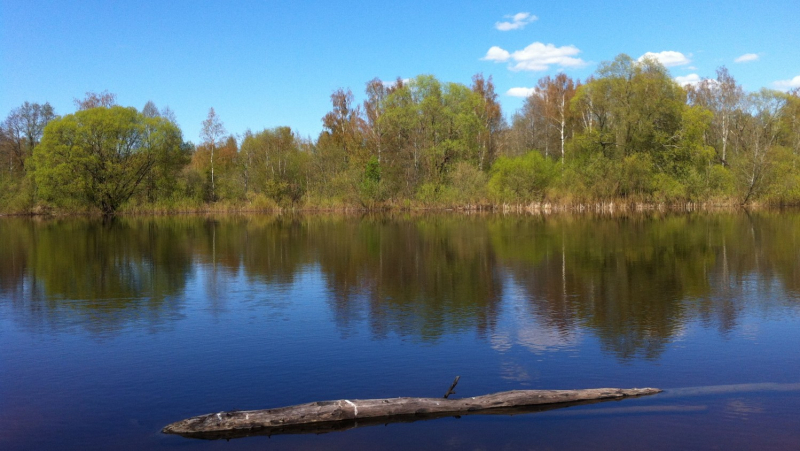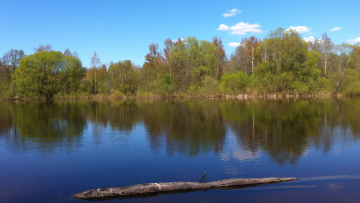Project – On record
This profile is no longer actively maintained, with the information now possibly out of datenature@banktrack.org

Project – On record
This profile is no longer actively maintained, with the information now possibly out of datenature@banktrack.org
What must happen
Banks and other financiers should ensure a comprehensive set of safeguards is in place before considering finance for any mil project. These should cover all of the requirements in Green Paper, Red Lines, and in the case of the Est-For mill should pay particular attention on the following issues.
- There are many indicators that there is not enough timber from truly sustainable sources to supply the amount required by the Est-For mill.
- Given the mill’s dimension and scale, the effluents into the Emajõgi river will irrevocably damage the ecological balance of its water basin.
- Careful scrutiny should be given to the claims about greenhouse gas emissions from the mill. So far, the full short-term and long-term forest carbon impacts have not been accounted for in a credible life cycle analysis.
- The new European regulation on accounting of emissions from land use, land use change and forestry (LULUCF) will require a reduction of logging from Estonian forests, that is incompatible with existing logging rates and even more with further logging intensification
| Sectors | Pulp, Paper and Paperboard Mills |
| Location |
|
| Status |
Cancelled
Design
Agreement
Construction
Operation
Closure
Decommission
|
| Website | http://biorefinery.ee/en/ |
The Est-For pulp mill project in Estonia is a planned biorefinery that will produce energy and pulp, projected to launch production in 2022. It would have a production capacity of up to 700,000 tons of pulp annually, which would require an input of three million cubic meters of pulpwood and wood chip each year; an enormous amount in the Estonian context. The project developers state that the project would source timber from "existing wood flow", however forests in Estonia are already overexploited, and there is no commitment to use timber from credibly certified sources.
Wood supply would primarily come from within Estonia, with additional sourcing from Latvia or Lithuania if necessary. The project requires an investment of EUR 1 billion.
Social and human rights impacts
The Emajõgi river provides recreation opportunities for a large area of Estonia, and is the basis for a growing eco-tourism industry that mostly benefits local communities. Many eco-tourism companies have expressed their concerns over impacts on the river health and from increased logging.
In December 2017, the Estonian Fishermen's Community issued a very detailed statement, expressing opposition to the mill, due the high pollution it would cause to the Emajõgi river.
Environmental and climate impacts
Forest management
The project's size is enormous not only by Estonian standards. The Est-For pulp mill will require 3,000,000 cubic meters of pine, spruce or birch wood each year - almost a third of total timber felled in the country each year. Timber will be mainly purchased from Estonia and partly from Latvia. The project developers state that the project would source timber from "existing wood flow", however forests in Estonia and Latvia are already overexploited, there is no commitment to use timber from credibly certified sources (FSC), and as such the project is expected to add to these problem.
The way Estonia manages its forests is currently at a point where environmental organisations on one side and the state and private forest owners on the other disagree on what the maximum logging volume should be. EKO (Environmental Council of NGOs) claimes that "the state had no idea what the logging volume of the current year would eventually be, and had not made any efforts to effectively limit logging volumes. The state had no sufficient overview of the industry either. Surveys had already shown that the current disorganized approach negatively affected the forests and the habitats it provided to the local fauna."
A new large consumer of forest resources like the planned pulp mill would worsen the current situation. Before the next large investments, measures needed to be taken to guarantee a sustainable use of Estonia's forests, including the appropriate legal measures. A recent OECD report recommended: “Encourage sustainable forestry management, including by limiting the intensity of forest use, and disseminating knowledge on sustainable forestry practices among private forest owners.”
In 2016 a study on Fungal Ecology was published suggesting that intensive management of Estonian forests, especially spruce dominated forests, poses a threat to rare wood inhabiting fungi. Furthermore, in the past years several changes to the Forest Act gave preference to those using timber industrially. The additional need for large volumes of timber will only worsen this process.
Biodiversity
In 2016 a study was published suggesting that intensive management of Estonian forests, especially spruce dominated forests, poses a threat to rare wood-dwelling fungi.
Even more threatened is the flying squirrel (Pteromys volans L.) The population of this rare mammal, whose habitat ranges from the Baltic Sea in the west to the Pacific coast in the east, is decreasing with every passing year. The Alutaguse forest district, in the north-east of the county, is the last permanent habitat of Estonia’s most endangered animal, These animals favour old growth forests, and they are seen as in indicator of the quality and health of the habitat. In the early 1990s, the habitat of flying squirrels covered 3180 square kilometres, but this has now shrunk to 550, a decrease of more than 80% over the last twenty years. There are currently less than 40 nesting places of flying squirrels left.
Birds also suffer from the consequences of intensive logging. In January 2017, the Estonian Ornithological Society warned that between 1984 and 2016, the abundance of forest-related species has decreased by an average of 60,000 bird pairs per year (0.5%), due to changes to forestry legislation and intensified forest management, leading to significant negative impacts on Estonian forests.
Water management
The mill will be built near the major Estonian river Emajõgi and will not use totally chlorine free technology (TCF), nor a closed water cycle, putting at risk local water ecosystems, which are already under severe stress. The mill will discharge a huge amount of effluents (1.2 % of the river flow), containing chloride, potassium, carbon, calcium and sulphate ions, threatening the credibility of national plans to reduce the river pollution to meet European Union requirements, and causing further harm to the lake’s ecosystem (source: Report of the National Audit of Estonia).
Other impacts
Governance
According to the TV station Pealtnägija show, the State Forest Agency RMK agreed with Est-For 15 years supply of timber. RMK was lead until December 2016 by an Est-For investor, and father of Est-For representative, Mati Polli. He resigned just before the new mill project have been announced. According to the Pealtnägija show, the agreement between RMK and Est-For had been signed beforethe project was made public. It is not clear whether the deal had been initially agreed before or after Mati Polli’s resignation from RMK board, but critics note that in either case he could have had an undue influence.
In March 2018, the City Council of Tartu released a strong position statement opposing the project, drawn up by consensus by all political groups: "Due to the unlawfulness and questionability of current procedural steps, the implementation of a national special plan is forbidden and the procedure for the drawing up of a national special plan must be called off." Rural municipalities in Tartu County have voiced similar opinions, with seven out of its eight local governments following the city's move. The decision came after meetings with all stakeholders, including the company that is promoting the new mill. Despite strong local concerns, the government decided to move forward with the national designated spatial plan for the establishment of the infrastructure necessary for the operating of the Est-For pulp mill. The City Council of Tartu has announced that it will take action against that decision.
Est-For states on its website that its investors represent 100% Estonian capital. These investors are: Aimar Varula, Arvo Türner, Heiki Vahermets, Peedo Pihlak, Toomas Mets and Virko Lepmets (OÜ Combiwood), Peeter Mänd (Ivard OÜ), Kaido Jõeleht (Kaamos Group), Jüri Külvik (Lemeks Grupp), Mati Polli (Tristafan OÜ) and Tiit Nilson (Woodwell).
Given the high amount of finance needed for this project (EUR 1 billion) it is expected that private sector banks will become involved.
Project sponsor
Est-For Invest OU
EstoniaOther companies
Applicable norms and standards
Inclusion of Greenhouse Gas Emissions From Land Use, Land Use Change Aand Forestry (LULUCF) into the 2030 Climate and Energy Framework. EU European Commission – Statement, Commission welcomes agreement on key legislation to tackle climate change, Brussels, 14 December 2017,
Est-For Biorefinery: New name, dirty old story - 24 May 2018
2018
2018-06-21 00:00:00 | Estonian government opts to initiate termination of pulp mill spatial plan
The Estonian government at its Thursday Cabinet meeting decided to initiate the termination of the national designated spatial plan for a planned €1 billion pulp mill in Southern Estonia. According to the government's decision, the circumstances that hinder the realisation of the plan have arrived aAnd are in complete opposition to the community, also highlighted by several legal disputes (Err.ee).
2018-02-01 00:00:00 | Billion-euro pulp mill deal with RMK may be in conflict of interest
Documents in the possession of ETV's "Pealtnägija" show that the State Forest Management Centre (RMK) and pulp mill developer Est-For Invest concluded an advance agreement guaranteeing the yet-unbuilt mill half of the RMK's pulpwood over a 15-year period. Critics of the deal see this as a conflict of interest or even prohibited state aid (Err.ee).

